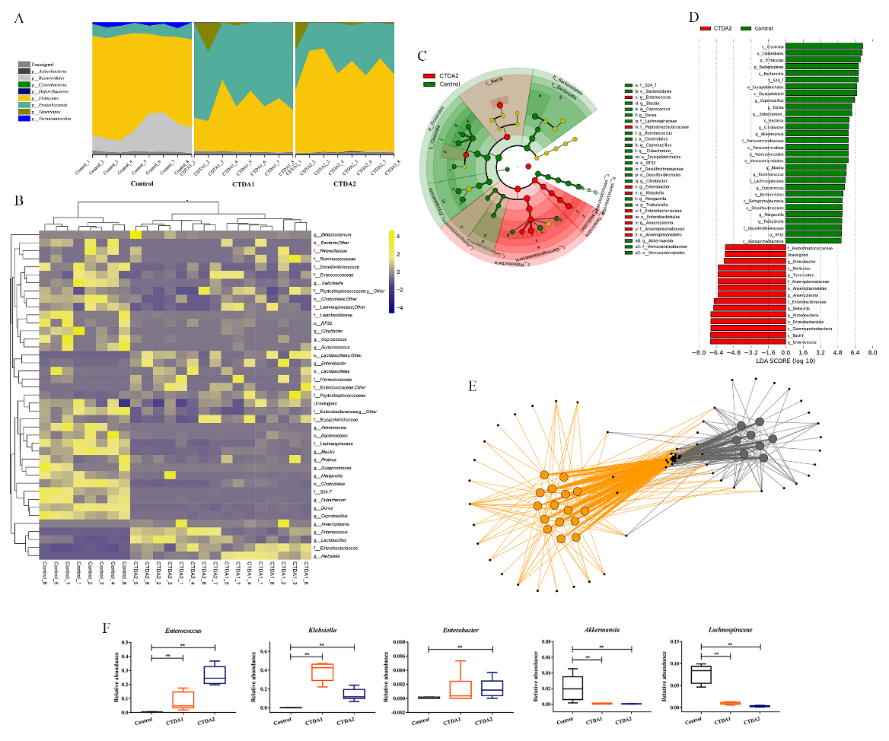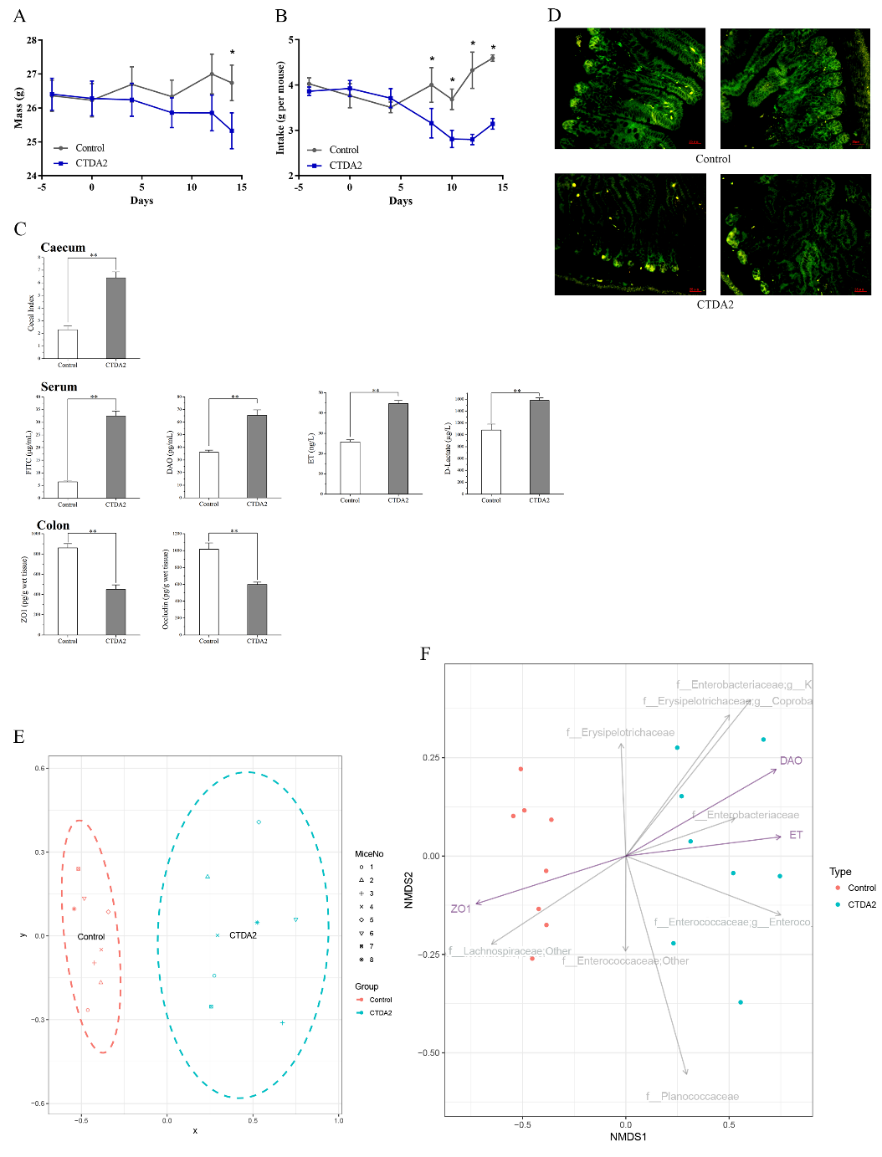Structural and functional alterations in the microbial community and immunological consequences in a mouse model of antibiotic-induced dysbiosis
Journal & Pages:Frontiers in Microbiology, 2018, 9: 1-11.
Abstract:The aim of this study was to establish continuous therapeutic-dose ampicillin (CTDA)-induced dysbiosis in a mouse model, mimicking typical adult exposure, with a view to using this to assess its impact on gut microbiota, intestinal metabolites and host immune responses. Mice were exposed to ampicillin for 14 days and antibiotic-induced dysbiosis was evaluated by alteration of microbiota and gut permeability. The cecal index was increased in the CTDA group, and the gut permeability indicated by fluorescent dextran, endotoxin and D-Lactate in the serum was significantly increased after antibiotic use. The tight-junction proteins ZO-1 and occludin in the colon were reduced to half the control level in CTDA. We found that alpha-diversity was significantly decreased in mice receiving CTDA, and microbial community structure was altered compared with the control. Key taxa were identified as CTDA-specific, and the relative abundance of Enterococcus and Klebsiella was particularly enriched while Lachnospiraceae, Coprobacillus and Dorea were depleted after antibiotic treatment. In particular, a significant increase in succinate and a reduction in butyrate was detected in CTDA mice, and the triggering of NF-kB enhancement reflected that the host immune response was influenced by ampicillin use. The observed perturbation of the microbiota was accompanied by modulation of inflammatory state; this included increase in interferon-g and RegIIIγ, and a decrease in secretory IgA in the colon mucosa. This study allowed us to identify the key taxa associated with an ampicillin-induced state of dysbiosis in mice and to characterize the microbial communities via molecular profiling. Thus, this work describes the bacterial ecology of antibiotic exposure model in combination with host physiological characteristics at a detailed level of microbial taxa.
Figures:


【作者提要】
通过模拟成人摄入剂量建立了抗生素导致的肠道菌群紊乱小鼠模型,解析了肠道微生物、代谢物和宿主免疫应答的影响机制,明确了抗生素暴露后的关键特征菌群和相关联的短链脂肪酸以及免疫指标,为判断菌群紊乱和宿主健康状态提供参考依据。
Authors:
Shi, Y (Shi, Ying)[1,2,3,4] ; Kellingray, L (Kellingray, Lee)[4,5] ; Zhai, QX (Zhai, Qixiao)[1,2,3] ; Le Gall, G (Le Gall, Gwenaelle)[4] ; Narbad, A (Narbad, Arjan)[4,5] ; Zhao, JX (Zhao, Jianxin)[1] ; Zhang, H (Zhang, Hao)[1,2] ; Chen, W (Chen, Wei)[1,2,6]
[ 1 ] Jiangnan Univ, State Key Lab Food Sci & Technol, Wuxi, Peoples R China
[ 2 ] Natl Engn Res Ctr Funct Food, Wuxi, Peoples R China
[ 3 ] Jiangnan Univ, Int Joint Res Lab Probiot, Wuxi, Peoples R China
[ 4 ] Quadram Inst Biosci, Gut Microbes & Hlth Programme, Norwich, Norfolk, England
[ 5 ] UK China Joint Ctr Probiot Bacteria, Norwich, Norfolk, England
[ 6 ] BTBU, Beijing Innovat Ctr Food Nutr & Human Hlth, Beijing, Peoples R China
DOI:10.3389/fmicb.2018.01948
Published:2018-08-21
 current location:
ICPG
>
Publications
>
Content
current location:
ICPG
>
Publications
>
Content